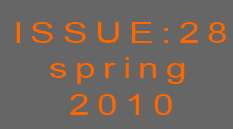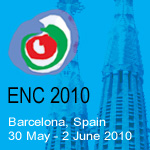 |
 |
ENS NEWS N° 28: Nuclear energy, clean air energyMother Nature has a habit of reminding us every so often who is boss, as thousands of stranded travelers and businessmen and women found out to their cost after the recent eruption of the Eyjafjallajökull volcano, in Iceland. The grave risk that the massive cloud of ash posed to the safety of aircraft forced airports to close down. Airline companies warned of potential financial losses. International conferences had to be cancelled at short notice. And that was just the start of it. Medical authorities in the worst affected countries advised people to filter the air they breathe by wearing a damp cloth over their mouth or a face mask. According to specialists in respiratory diseases the combination of volcanic ash with moisture in the lungs can create a substance akin to liquid cement – not the nicest of propositions! Well, you don’t need to be Sherlock Holmes to deduce that the potential threat of volcanic ash is not just to jet engines and the environment as a whole but, more specifically, to human health too. People who suffer from acute respiratory problems such as asthma or emphysema are especially vulnerable. Images of thousands of South East Asians walking or cycling to work with face masks on, trying to avoid breathing in the deadly smog that regularly paralyses their cities, have periodically haunted our television screens. The recent volcanic eruption, coupled with these apocalyptic images from the other side of the world, got me thinking about why it is that poor air quality, with its blatantly obvious negative effects upon human health and the environment, is not given as much oxygen of publicity as the CO2 emissions that engender climate change. Perhaps we are more concerned about the environment in general than the more immediate effect of certain pollutants upon human health? This in turn led me to consider why it is that one of the main advantages of nuclear energy, the fact that it is a clean air energy source, is often underplayed. When we think about harmful emissions the first thing that we tend to think of is the CO2 emissions. The global preoccupation with reducing these emissions has inevitably grabbed the political and scientific spotlight because promoting the low-carbon economy has become a sine qua non synonymous with safeguarding the environment. The nuclear community rightly stresses that nuclear is CO2-free, unlike fossil fuel energy alternatives. However, the rush to grasp the low-carbon Holy Grail has tended to allow other equally obnoxious pollutants to slip inadvertently under the radar and avoid the same degree of public admonishment. The toxic cocktail of substances like sulphur dioxide and nitrous oxide that are emitted by various polluting industries (and, significantly, by volcanoes too), in spite of strict national and European legislation, is just as damaging to the environment as CO2 This is because these chemicals are precursors to the acid rain that so blights our cities. More significantly, they pose a threat to human health – just like the volcanic ash. Studies have shown that acid rain particulates can cause respiratory illnesses and are even linked to premature deaths from diseases such as cancer. Of course, the famous “REACH” legislation that was passed by the European Commission did target many of the chemicals that pollute the air, but somehow they don’t seem to get the global attention today that CO2 emissions do. Try explaining why that is to asthma sufferers or to Chinese citizens who have to run the gauntlet of airborne pollutants on a daily basis. If these products were more publicised then an additional environmental advantage of nuclear energy would be better appreciated. Yes nuclear energy is clean air energy, but perhaps we don’t make enough of this fact? Within such a communications void common myths and misconceptions about nuclear power plants stubbornly persist – for example that the white smoke-like clouds that are emitted from a nuclear power plant’s cooling towers add to air pollution. We know that it is just steam that emerges from a nuclear plant’s cooling towers, but do enough members of the public know it? An increasingly environmentally-conscious public that rightly sees clean air as a basic human right, not a luxury, needs to know that nuclear energy does more to help the environment than just mitigate the effects of climate change by not emitting CO2. It also helps the environment and human health by not emitting those dangerous substances that pollute the air that we breathe. It is up to the nuclear community to make its voice heard on the issue of nuclear’s clean air credentials. By doing so we can help dispel common myths and help further increase public acceptance of nuclear energy. A bumper edition ENS NEWS N° 28 kicks off with a Word from the President on the upcoming ENC conference in Barcelona. This is followed by a thought-provoking piece from Andrew Teller on the merits - or otherwise - of the World Wildlife Fund’s annual Earth Hour initiative, which attempts to raise awareness of the environmental threat to out planet of excessive energy consumption. Finally, ENS’s High Scientific Council provides a position paper on nuclear proliferation in response to the nuclear disarmament deal that was recently signed between the US and Russia and to the deteriorating situation in Iran and Korea. The ENS Events section features information on the upcoming ENC conference in Barcelona, one of the most important conferences on the international nuclear events calendar, which has a packed programme and an impressive cast of top-level speakers. The Member Societies & Corporate Members section contains a number of reports: member society news updates from Hungary, Finland, Spain and Belgium; a feature on nuclear training and educational initiatives in Romania; a detailed look at the Belgian BR2 high-flux reactor that produces medical radioisotopes; a profile of Spanish company ENUSA’s international business portfolio; a report on Westinghouse’s growing presence on the UK market; an appraisal of the Centralised Storage Facility (ATC) in Spain that will store the country’s spent fuel and high-level radioactive waste and an obituary to Juan Antonio Rubio, the Director, General of CIEMAT, in Spain, who sadly passed away recently. In the ENS World News section there is a NucNet interview of André Versteegh, former Director of the Nuclear Research and Consultancy Group in the Netherlands (NRG), who recently retired, and information about upcoming ENS sponsored conferences. Enjoy ENS NEWS N° 28 and if you have any comments or suggestions on the current or future editions please don’t hesitate to contact me.
|
||
|
||
Why I did not switch the lights off for Earth HourEarth Hour is a global event promoted by the World Wildlife Fund, also known as WWF. On the last Saturday of March of each year (in 2010, it was the 27th), people the world over are invited to switch their lights off for one hour starting at 8:30 p.m. |
||
Preventing nuclear proliferation: a duty for the nuclear communityWith the recent signature by the United States and Russia of nuclear disarmament treaties on the one hand and the deteriorating situation in Iran and North Korea on the other hand, nuclear proliferation is more than ever at the forefront of the political agenda. In this changing context, the European Nuclear Society asked its High Scientific Council to issue a position paper on nuclear proliferation matters.
|
||
ENC 2010 - Register now!The European Nuclear Conference (ENC) will be held from 30 May to 2 June 2010 at the Palau de Congressos de Catalunya in Barcelona, Spain. |

